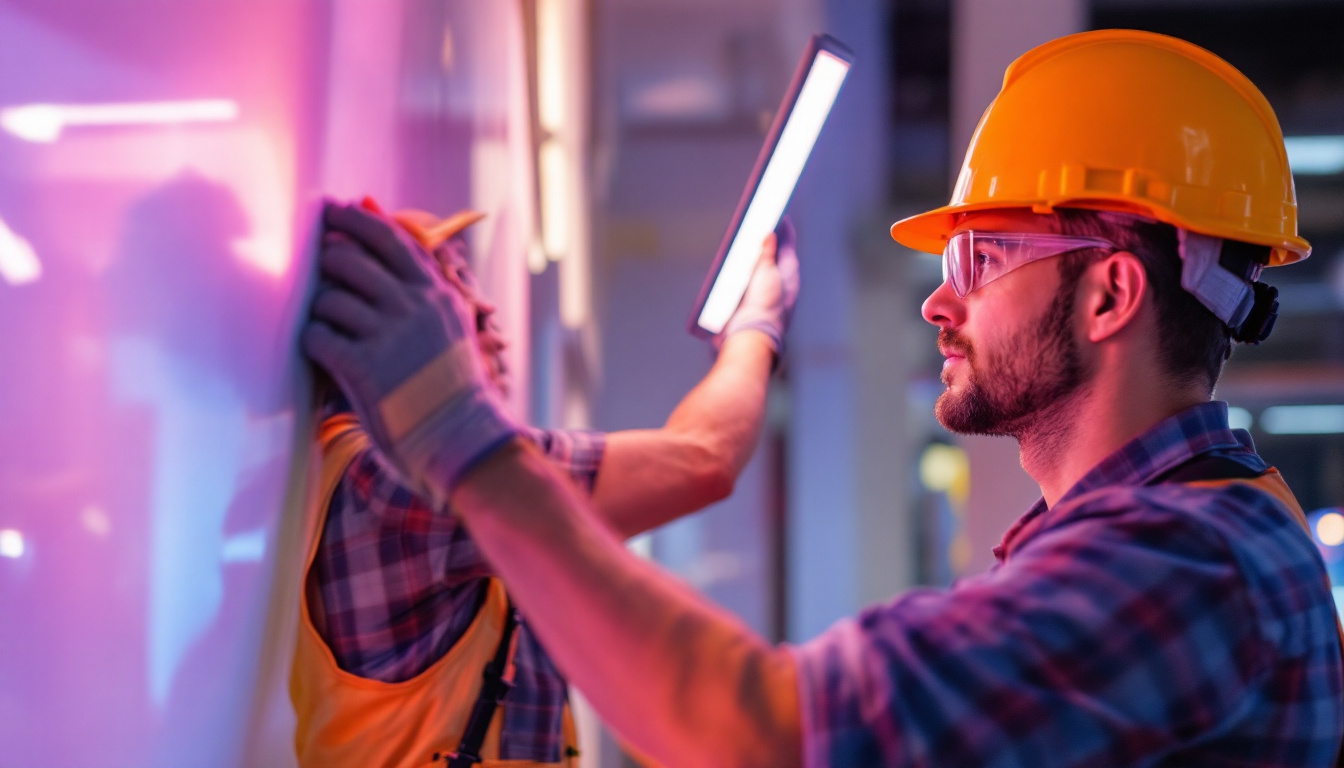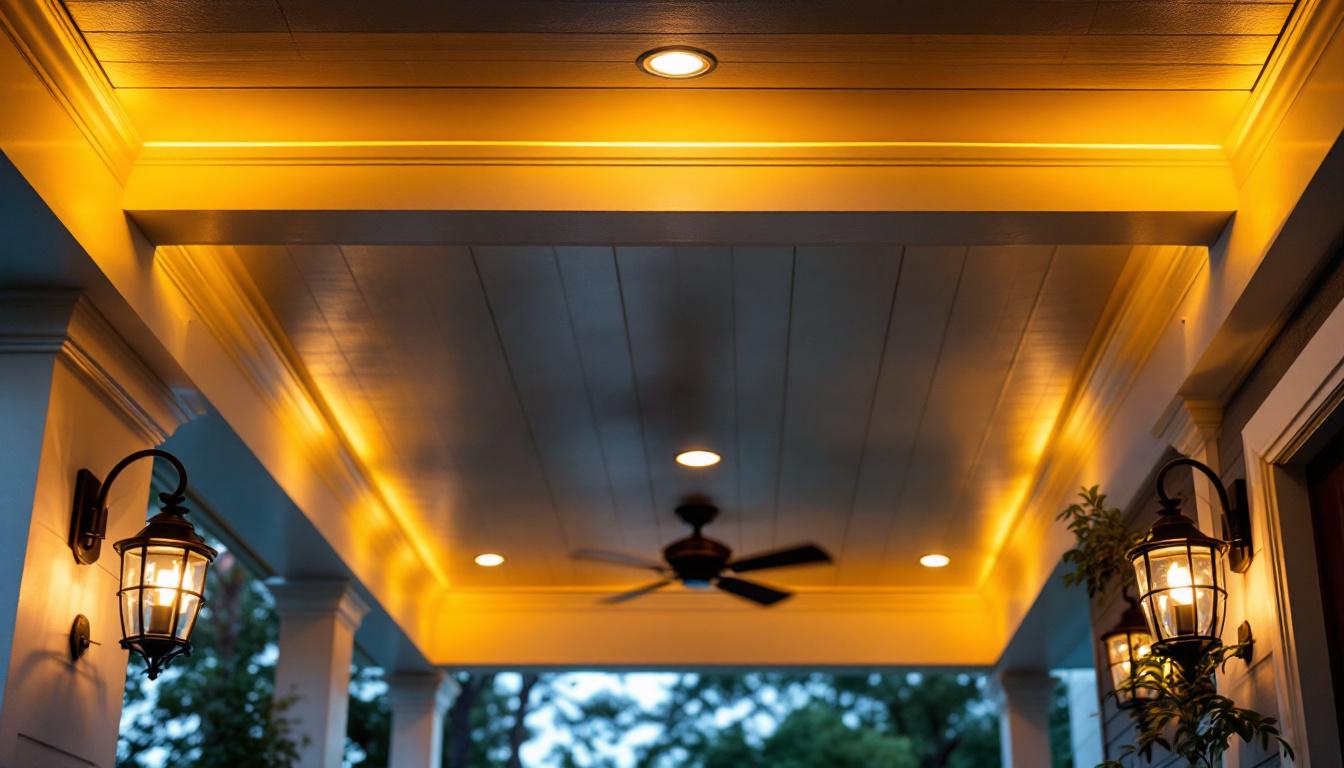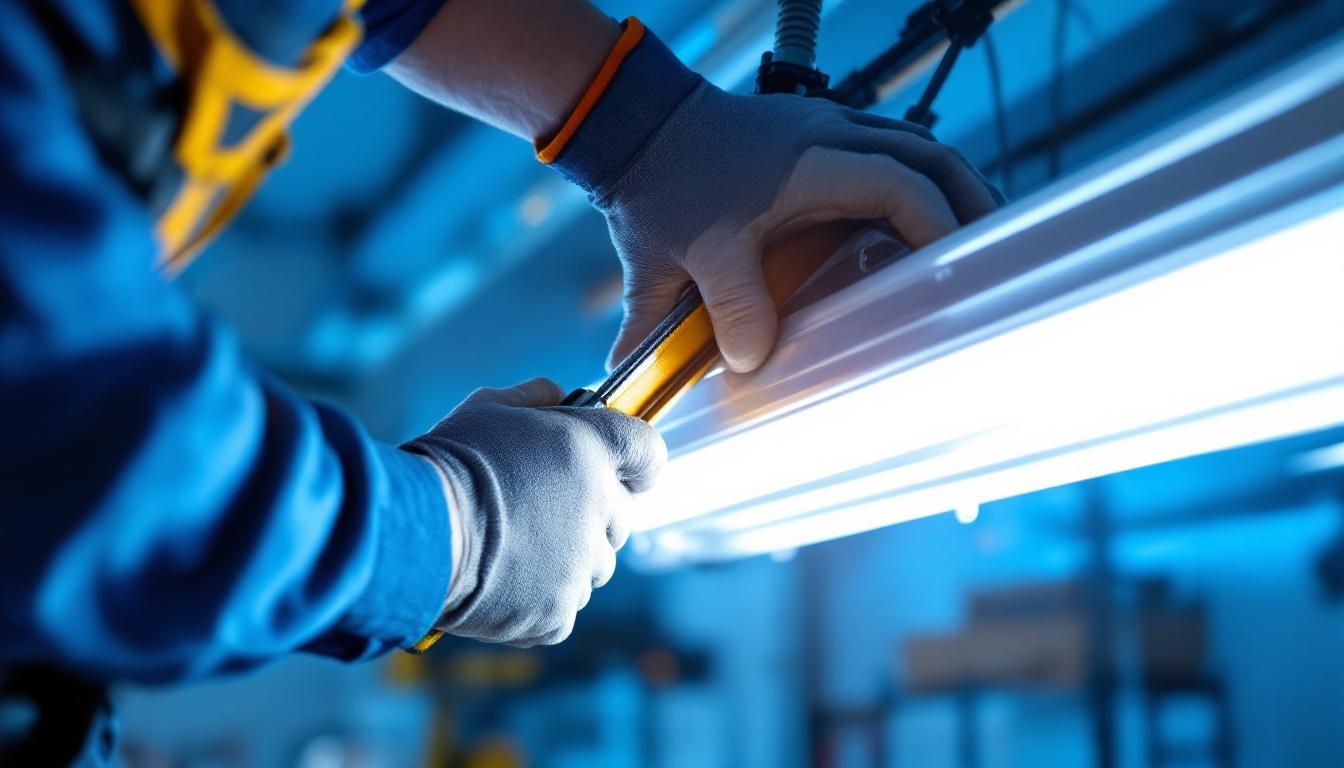
Fluorescent lamps have long been a staple in the lighting industry, providing an energy-efficient alternative to traditional incandescent bulbs. As lighting contractors, understanding the intricacies of fluorescent lamps can significantly enhance your service offerings and improve customer satisfaction. This article aims to provide valuable insights and practical advice for lighting contractors working with fluorescent lighting systems.
Fluorescent lamps operate on a principle that involves the excitation of gas within a sealed tube. When an electric current passes through the gas, it emits ultraviolet light, which then excites a phosphor coating on the inside of the lamp, producing visible light. This process is not only efficient but also offers a range of color temperatures and brightness levels, making fluorescent lamps versatile for various applications. The ability to choose from different color temperatures allows users to create specific atmospheres in their spaces, whether it be a warm, inviting glow for residential areas or a bright, clinical light for workspaces.
There are several types of fluorescent lamps available on the market, each designed for specific applications. The most common types include linear fluorescent tubes, compact fluorescent lamps (CFLs), and circline lamps. Linear tubes are often used in commercial settings, while CFLs are popular for residential use due to their compact size and energy efficiency. Understanding the differences between these types can help contractors recommend the best solutions for their clients. For instance, linear tubes are ideal for overhead lighting in offices and retail spaces, while CFLs can be easily integrated into existing fixtures in homes, providing a simple upgrade to energy-efficient lighting.
Additionally, special types of fluorescent lamps, such as high-output (HO) and very high-output (VHO) lamps, are designed for applications requiring higher illumination levels. These lamps are often utilized in environments such as warehouses, gymnasiums, and manufacturing facilities, where bright, consistent lighting is crucial for safety and productivity. Recognizing the specific needs of a project will enable contractors to select the appropriate lamp type, ensuring optimal performance and energy efficiency. Furthermore, some fluorescent lamps are designed with specific spectral outputs, making them suitable for specialized tasks such as photography or plant growth, thus expanding their usability across various industries.
Fluorescent lamps offer numerous advantages that make them an appealing choice for both contractors and clients. One of the most significant benefits is their energy efficiency. Compared to incandescent bulbs, fluorescent lamps consume significantly less energy, which translates to lower electricity bills for end-users. This efficiency can be a strong selling point when discussing lighting options with clients. In fact, many utility companies offer rebates for the installation of energy-efficient lighting, making the transition to fluorescent lamps not only environmentally friendly but also financially advantageous.
Moreover, fluorescent lamps have a longer lifespan than traditional bulbs, often lasting up to 10 times longer. This durability reduces the frequency of replacements, which can be particularly beneficial in commercial settings where downtime can be costly. Additionally, the lower heat output of fluorescent lamps contributes to a cooler environment, which can help reduce air conditioning costs in warmer climates. By highlighting these benefits, contractors can position themselves as knowledgeable professionals who prioritize cost-effective solutions for their clients. Furthermore, the wide availability of fluorescent lamps in various shapes and sizes means that they can be easily incorporated into both new constructions and retrofitting projects, enhancing their appeal in the ever-evolving landscape of lighting design.
Proper installation of fluorescent lamps is crucial for ensuring optimal performance and longevity. As a lighting contractor, adhering to best practices during installation can prevent common issues and enhance customer satisfaction.
Before beginning the installation process, it is essential to assess the existing electrical infrastructure. Contractors should ensure that the fixtures are compatible with the selected fluorescent lamps. This includes checking the ballast type, as fluorescent lamps require a specific ballast to operate correctly. Using the wrong ballast can lead to flickering, reduced efficiency, and even lamp failure.
Additionally, contractors should consider the layout and design of the space. Proper placement of fixtures can enhance the overall lighting quality and ensure even distribution of light. Taking measurements and planning the layout in advance can save time and prevent potential issues during installation.
The installation process for fluorescent lamps typically involves several key steps. First, ensure that the power is turned off to the circuit where the lamps will be installed. This is a critical safety measure that should never be overlooked. Next, remove any existing bulbs and fixtures, taking care to follow proper disposal guidelines for fluorescent lamps, as they contain small amounts of mercury.
Once the old fixtures are removed, install the new ballast if necessary. Follow the manufacturer’s instructions carefully, as improper installation can lead to performance issues. After installing the ballast, secure the new fluorescent lamps in place, ensuring they are properly seated in their sockets. Finally, restore power to the circuit and test the installation to confirm that everything is functioning correctly.
Regular maintenance of fluorescent lighting systems is essential for ensuring their longevity and efficiency. As a lighting contractor, providing clients with maintenance tips can enhance your service offerings and build long-term relationships.
Routine maintenance for fluorescent lamps primarily involves cleaning and inspecting fixtures. Dust and debris can accumulate on the lamps and fixtures, reducing light output and efficiency. Contractors should recommend that clients regularly clean the fixtures with a damp cloth to maintain optimal performance.
Additionally, it is important to periodically inspect the lamps for signs of wear or damage. Flickering or dimming lights can indicate that a lamp is nearing the end of its lifespan or that there may be an issue with the ballast. Encouraging clients to report any irregularities promptly can prevent more significant problems down the line.
Despite their reliability, fluorescent lamps can encounter issues that require troubleshooting. One common problem is flickering, which can be caused by a faulty ballast, poor electrical connections, or aging lamps. Contractors should be prepared to diagnose these issues and recommend appropriate solutions, such as replacing the ballast or the lamp itself.
Another issue that may arise is the appearance of a buzzing sound, which can indicate that the ballast is malfunctioning. In such cases, replacing the ballast is often the best course of action. By being knowledgeable about these common issues, contractors can provide effective solutions and instill confidence in their clients.
As the world becomes increasingly focused on sustainability, energy-efficient lighting solutions are more important than ever. Fluorescent lamps play a significant role in reducing energy consumption and minimizing environmental impact.
Fluorescent lamps are often rated based on their energy efficiency, which is indicated by the Energy Star label or similar certifications. These ratings provide valuable information about the lamp’s energy consumption and performance. Contractors should be familiar with these ratings to help clients make informed decisions about their lighting choices.
Moreover, understanding the impact of fluorescent lamps on energy consumption can help contractors advocate for their use in various applications. For instance, businesses looking to reduce their carbon footprint may benefit from switching to fluorescent lighting, as it can significantly lower energy costs and contribute to sustainability goals.
Proper recycling and disposal of fluorescent lamps are essential for minimizing environmental impact. Since these lamps contain small amounts of mercury, they must be handled with care. Contractors should educate clients about local regulations regarding the disposal of fluorescent lamps and encourage them to utilize recycling programs.
Many communities offer recycling options for fluorescent lamps, and contractors can assist clients in finding these resources. By promoting responsible disposal practices, contractors can demonstrate their commitment to sustainability and environmental stewardship.
The lighting industry is constantly evolving, and staying informed about future trends can help contractors remain competitive. While LED technology is gaining popularity, fluorescent lamps still have a place in the market, particularly in specific applications.
Recent advancements in fluorescent lamp technology have led to improved efficiency and performance. For example, new phosphor coatings and improved ballast designs have enhanced the color rendering and lifespan of fluorescent lamps. Contractors should stay updated on these advancements to provide clients with the latest options available.
Additionally, hybrid lighting systems that combine fluorescent and LED technologies are becoming more common. These systems can offer the benefits of both technologies, providing energy efficiency and high-quality light. By understanding these trends, contractors can better serve their clients and recommend innovative solutions.
While LED lighting is often touted as the future, there remains a steady demand for fluorescent lamps in various applications. Commercial spaces, such as offices and retail environments, often benefit from the soft, diffuse light that fluorescent lamps provide. Understanding the specific needs of different markets can help contractors tailor their offerings accordingly.
Moreover, as energy efficiency regulations continue to evolve, contractors should be prepared to adapt their practices to meet changing demands. Staying informed about industry trends will enable contractors to remain competitive and provide valuable insights to clients.
Fluorescent lamps remain a vital component of the lighting industry, offering energy-efficient solutions for a wide range of applications. For lighting contractors, understanding the intricacies of these lamps—from installation and maintenance to energy efficiency and future trends—is essential for providing exceptional service to clients.
By staying informed and adapting to the evolving landscape of lighting technology, contractors can position themselves as trusted experts in the field. Whether working on commercial projects or residential installations, a solid grasp of fluorescent lamps will undoubtedly enhance the quality of service and customer satisfaction.
In an industry that values innovation and sustainability, embracing the benefits of fluorescent lighting while remaining open to new technologies will ensure continued success for lighting contractors in the years to come.
Ready to enhance your lighting projects with the efficiency and quality of fluorescent lamps? At LumenWholesale, we provide lighting contractors like you with the best in spec-grade lighting products at prices that shine. Say goodbye to local distributor markups and hello to our extensive selection of reliable, high-performance lighting solutions. With free shipping on bulk orders, you can stock up on the fluorescent lamps you need to complete any project with confidence. Elevate your service offerings and delight your clients with the perfect blend of quality, affordability, and convenience. Discover Wholesale Lighting at the Best Value today and light up your business with LumenWholesale.

Discover why lighting contractors should make lighting panels a top priority in their projects.

Discover how choosing the right lights for porch ceilings can transform lighting contractors’ projects.

Discover the step-by-step guide to replacing a fluorescent light ballast with expert tips from seasoned lighting contractors.

Discover essential techniques and best practices for lighting contractors working with US electrical outlets.